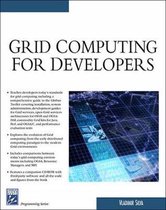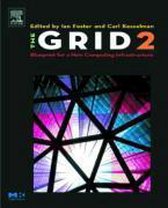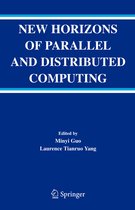Grid Computing Techniques & Future Prospects
Afbeeldingen
Sla de afbeeldingen overArtikel vergelijken
- Engels
- Hardcover
- 9781631177040
- 01 juni 2015
- 219 pagina's
Samenvatting
In the past two decades, grid computing have fostered advances in several scientific domains by making resources available to a wide community and bridging scientific gaps. Grid infrastructures have been harnessing computational resources all around the world allowing all kinds of parallelisms to be explored. Other approaches to parallel and distributed computing still exist like the use of dedicated high-performance (HPC) infrastructures, and the use of clouds for computing and storage, but grid computing continues to be the predominant technology used for scientific computing in Europe, through the European Grid Infrastructure (EGI) and the European Middleware Initiative (EMI). Currently, there is a trend towards the use of cloud technologies for computing and storage. In Europe, this trend is being followed by taking advantage of all the experiences gained from building grid infrastructures and the technologies developed around them (resource management orchestration, unified job description languages, security, user interfaces, programming models, and scheduling policies, among others). As a result, the European Grid Infrastructure Federated Cloud is being built on top of the grid infrastructure already available. After almost two decades of the development of grid software and components and the emergence of competing technologies, now is the time to discuss current trends and to assess future prospects. When organising this book, the authors considered contributions that would review the current grid computing scenario as well as contributions that would summarise the main tools and technologies used so far. The chapters in this book provide reviews for the following topics: a) performance prediction for parallel and distributed computing systems, b) resource sharing on computational grids, c) economic models for resource management, and d) programming frameworks. The chapters address grid issues such as a) the challenges of designing efficient job schedulers for production grids, b) scalability analysis of bag-of-tasks applications, c) the energy efficiency of resource reservation-based scheduling, and d) the development of parallel applications using the grid environment. Additionally, the following tools are presented: a) a programming framework based on the concept of a pluggable grid service that avoids explicit calls to grid services in scientific code and b) a desktop grid framework that runs on top of a cloud and can be deployed on the fly. The authors were each invited to contribute a chapter to this book, which were carefully revised and selected based on their originality and the value of their contribution to the overall discussion on grid computing and its future prospects.
Productspecificaties
Wij vonden geen specificaties voor jouw zoekopdracht '{SEARCH}'.
Inhoud
- Taal
- en
- Bindwijze
- Hardcover
- Oorspronkelijke releasedatum
- 01 juni 2015
- Aantal pagina's
- 219
- Illustraties
- Nee
Betrokkenen
- Hoofdredacteur
- Jorge G Barbosa
- Tweede Redacteur
- Ines de Castro Dutra
- Hoofduitgeverij
- Nova Science Publishers
Overige kenmerken
- Extra groot lettertype
- Nee
- Product breedte
- 178 mm
- Product hoogte
- 19 mm
- Product lengte
- 254 mm
- Verpakking breedte
- 180 mm
- Verpakking hoogte
- 260 mm
- Verpakking lengte
- 260 mm
- Verpakkingsgewicht
- 572 g
EAN
- EAN
- 9781631177040
Je vindt dit artikel in
- Categorieën
- Boek, ebook of luisterboek?
- Boek
- Taal
- Engels
- Beschikbaarheid
- Leverbaar
- Studieboek of algemeen
- Algemene boeken
Kies gewenste uitvoering
Bindwijze
: Hardcover
Prijsinformatie en bestellen
De prijs van dit product is 269 euro en 99 cent.
2 - 3 weken
Verkoop door bol
- Prijs inclusief verzendkosten, verstuurd door bol
- Ophalen bij een bol afhaalpunt mogelijk
- 30 dagen bedenktijd en gratis retourneren
- Dag en nacht klantenservice
Shop dit artikel
Rapporteer dit artikel
Je wilt melding doen van illegale inhoud over dit artikel:
- Ik wil melding doen als klant
- Ik wil melding doen als autoriteit of trusted flagger
- Ik wil melding doen als partner
- Ik wil melding doen als merkhouder
Geen klant, autoriteit, trusted flagger, merkhouder of partner? Gebruik dan onderstaande link om melding te doen.









